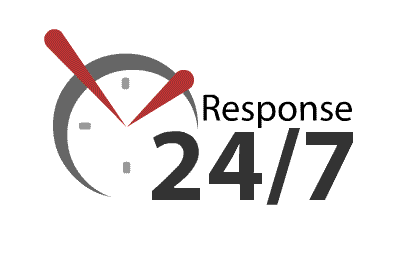Why Cold Storage Still Matters: Managing a Crypto Portfolio with Trezor Devices
Okay, so check this out—I’ve been juggling hot wallets, exchange accounts, and hardware devices for years. Something felt off about relying on a phone app alone when the stakes are high. Wow. My gut said: keep the private keys offline. Seriously? Yes. And not because it’s fashionable, but because the math and repeated incidents make a cold-first mindset practical for anyone holding real value.
Here’s the thing. Portfolio management in crypto isn’t just about returns. It’s about risk surface. Short-term traders can live with convenience, but if you’re prioritizing security and privacy, you need a plan that reduces attack vectors. Medium-term storage, diversification across custody types, and a clear access plan matter more than chasing every new token. On one hand, liquidity is tempting—on the other hand, a hacked exchange or a malicious app can wipe you out in hours. Initially I thought hardware wallets were overkill for small stacks, but then I realized how much peace of mind they buy, especially as balances grow.
I’ll be honest: I’m biased toward physical control. (oh, and by the way…) I like holding something that represents my private keys. It scratches a very human itch for ownership. My instinct said: treat your seed like a deed to a house. Lock it in a safe place, limit who knows where it is, and have a trusted, documented process for recovery that doesn’t expose you to social engineering.

Cold Storage Fundamentals: What I actually do
Short version: separate keys from daily ops. Long version: maintain at least two forms of custody that meet different risk criteria. One is a cold device like a Trezor for long-term holdings, another is a multisig or a reputable custody service for liquidity needs. Hmm… that sounds fancy, but it’s practical. For example, I keep primary BTC and ETH holdings on a Trezor device offline. I use smaller hot wallets for trading and smart-contract interactions. This limits exposure without sacrificing maneuverability when needed.
When setting up a Trezor, follow the device’s on-screen instructions and never import seeds via a screenshot, cloud notes, or email. My shorthand: never digitize the seed. Ever. Write it on paper or better yet, use a durable backup like metal plates if you want long-term survivability. Also: stash copies in physically separated locations—different city, different threat model. On one hand you mitigate physical loss, though actually, too much duplication raises theft risk if someone discovers your stash. So there’s a balance. Initially I over-duplicated—then I tightened up the plan.
Security hygiene matters. Keep firmware up to date, but don’t blindly click updates in public spaces. Verify firmware signatures when possible. Use a passphrase with your seed if you want plausible deniability—though note, passphrases add operational complexity and if lost, your funds are permanently inaccessible. I’m not 100% sure everyone needs a passphrase, but for larger portfolios it’s worth considering.
Also: document recovery workflows for heirs or business partners. A recovery plan is pointless if the instructions are ambiguous. I once saw a family lose access because the notes were unclear—very very painful. Make the instructions simple, use plain language, and store them separately from the seed itself.
How Trezor Devices Fit Into Portfolio Management
Okay, so the Trezor devices are basically a secure signing module. They don’t need to touch the internet to do their job—your computer sends a transaction, the device signs it, and you’re good. That separation is huge. On a practical level that means I can keep long-term holdings insulated from exchange hacks or phone malware. The only time the private keys are exposed is, well, never. The device handles the signing and that’s that.
As your portfolio evolves, consider tiered access. Tier 1 is deep cold storage for the bulk: Trezor (or similar) with a long-term seed and minimal spending frequency. Tier 2 is a multisig wallet for sizeable but liquid holdings—this reduces single-point-of-failure risk. Tier 3 is hot wallets for active trading. This approach helps reconcile security with practical needs: you can still reposition assets when opportunities arise without jeopardizing everything in a single compromise.
What bugs me about some guides is the focus on tech without behavioral context. Security isn’t just a product—it’s a practice. Your family, habits, email hygiene, and physical safes all matter. A Trezor device won’t protect you if you announce your holdings on social media and then fall for a phishing attack. So pair the tech with sensible privacy practices: burner emails for wallet setup, minimal public footprint, and compartmentalized device use.
Using Software Wallets Safely with Trezor
There are times you want a nicer UI for portfolio overview or token management. That’s fine. I use desktop apps and tools to aggregate balances and prepare transactions, but always sign with the Trezor. The trezor suite app is one of the more straightforward options to pair with Trezor devices—it’s designed to let you manage accounts and sign transactions while keeping the seed offline. Use it or a similarly reputable tool, but avoid unknown third-party apps that request seed phrases or private key exports.
Important tip: verify the addresses shown on the hardware device screen before confirming a transaction. Software can be compromised; the device is your last line of verification. I’ve seen people click through without checking—big mistake. Also test small txs first when interacting with new contracts or bridges. A $5 test is cheap insurance compared to losing a large sum.
Multisig is underused. If you can implement a 2-of-3 or 3-of-5 scheme across different device types and geographic locations, do it. Yes it’s more complex. Yes it’s a pain to set up. But it’s a powerful guardrail against single-device failure, lost seeds, or targeted theft. There are tradeoffs: more people or devices in the mix increases coordination overhead. Weigh that against the portfolio’s value and adversary model.
Common Questions (and real answers)
Do I need a hardware wallet if I only hold small amounts?
Short answer: depends. If you’re under a comfort threshold and accept the risk, maybe not. But if you plan to scale holdings, start practicing good habits early. My rule of thumb: once value reaches what you’d feel upset losing, move it offline. People underestimate how fast things can grow or get targeted.
What if I lose my Trezor device?
Use your seed to restore on another device or a trusted backup. That’s why the recovery seed is the single most important item. If you used a passphrase, recovery without it is impossible—so document that choice carefully. And no, the seed printed on paper isn’t safe enough alone; use metal backups if long-term survival is a priority.
Are metal backups worth it?
Yes for long-term holders. They’re resistant to fire, water, and many forms of degradation. They’re not invincible—store them smartly. Consider splitting words across plates and using a dead-drop strategy across multiple secure locations to reduce the chance of single-point loss or theft.
How often should I update firmware?
Update when there’s a trusted, signed release that addresses security or major usability issues. Don’t rush to update the moment a patch appears—verify sources and community feedback. I’ve bumped into bugs from rushed updates, so give it a short monitoring period unless the patch fixes a critical vulnerability.




